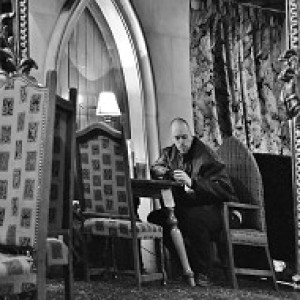Tales Of Angels
John Henry Parr was seventeen years and one month old when he climbed on his bike to cycle to the village of Obourg on the 21st of August, 1914. Officially, he was still a year too young to be serving in the British Army, but had in fact been a soldier for two years already, since a recruiting sergeant from the Middlesex Regiment had taken pity on him in August 1912 - a short yet eager boy, rarely guaranteed hot or nourishing meals in a hard-working but impoverished North London home - and by the time war broke out, John was a confident bicycle reconnaissance scout, known as "Ol' Parr" to the other troops in 4th Battalion. John's task in Obourg was to reconnoitre the landscape immediately ahead of the British Expeditionary Force, entrenched along the Conde canal north of the city of Mons. He left quickly and enthusiastically. He never returned.
By the 23rd of August 1914, the German Army had been advancing through Belgium for nineteen days. They were supposed to capture Paris and force an unconditional French surrender within forty-two; the crucial Belgian city of Liege, which they'd aimed to take in two days, had resisted for a full ten. The Schlieffen Plan was failing, but the French Army had done the Germans an astonishing favour in launching a series of suicidal offensives into Alsace-Lorraine in the first fortnight of the war, and leaving the Belgian border largely unguarded. They could still deliver a knockout blow to France, but the right wing of their advance - the troops who had the longest distance to travel through Belgium - had to make up for lost time and storm into France immediately. The only obstacle in their way was the British Expeditionary Force, whom they outnumbered in the immediate area by three to one.
At Mons on the 23rd of August, British troops fought from dawn till dusk to repel German attacks across the Conde canal. They were drilled to direct rifle fire accurate from three hundred yards at a rate of fifteen rounds per minute, and with only two machine-guns issued to each infantry battalion (the army had considered them too expensive to manufacture and too complicated to train extensively with), this rapid fire was crucial to defending the city. The 4th Battalion of the Royal Fusiliers bore the brunt of the German assault, and according to Fusilier William Holbrook, "The fire from the was more like machine-gun fire. The Germans were suffering a lot of casualties as far as I could see. But they were reinforced - they did not fall back..."
Despite being outnumbered three to one, British forces inflicted three times as many casualties on the Germans as they suffered. It wasn't enough. The enemy kept coming, and though British commanders planned to hold the position and reinforce through the night, they found their position compromised by the French Army's sudden decision to retreat from their lines to the east. They had no choice but to withdraw from Mons, having dealt a bloody nose to the German advance but failed to stop it. It was treated as a victory by the press at home, capturing the imaginations of the public and giving rise to the myth of "the Angels of Mons"; ghostly longbowmen from Agincourt who supposedly rose from the mist at the battle's key moment to save their 20th century compatriots. There were, of course, no angels at Mons. Six thousand dead soldiers, certainly, but no angels.
However, it's not difficult to understand why the idea of long-dead soldiers coming back to life gained such sudden and fervent currency with a public now confronted by the first reports of casualties on the front line. For women like Alice Parr - the North London laundrywoman whose youngest son John had ridden out to Obourg on the 21st - such tales were hope in the midst of despair. Even a hundred years on, the circumstances of John Parr's death are shrouded in mystery; we know that he was the first British soldier to be killed in the Great War, but it's also been established that no German forces were even remotely in the vicinity of Obourg on the 21st of August, meaning that John was, in all likelihood, shot by "friendly" fire from startled British sentries, or a lost French patrol, or perhaps even a Belgian confused by his khaki uniform. We do know that in the confusion of the British retreat, John's death went unreported, and therefore was not communicated to his family at home. We know that his mother continued to write to John for two months without receiving a reply, until one of his mates wrote back to her in October to say that he was missing. We know that a frightened Alice then contacted the War Office to try and find out the truth, and was wrongly reassured by an officer that John was alive and well at the front line. We know that after Alice sent several more unanswered letters to the front, John's captain eventually wrote back in early 1915 to reiterate that John was missing. We know that Alice then waited four more years to finally learn that her youngest son had been shot dead in August 1914.
John Henry Parr lies in St Symphorien cemetery, beneath a gravestone which states the age he pretended to be for army records. Directly opposite his grave lies George Edwin Ellison, the last British soldier to die in the war, killed just a mile or so from where Parr had been shot; the prologue and epilogue of a colossal and ultimately circular tragedy, lasting over four years, which began and ended in the city of Mons.
- 0
- 0
- Nikon D3100
- 1/100
- f/5.6
- 55mm
- 3200

Comments
Sign in or get an account to comment.


